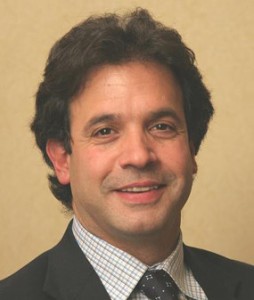
Aging Brain Initiative Seminar Series with Dr. Rudolph Tanzi
Description
Alzheimer’s disease (AD) is the most common form of dementia affecting the elderly and is characterized by global cognitive decline. AD is strongly influenced by both genetic factors and lifestyle. While certain rare gene mutations, e.g. in the APP, PSEN1 and PSEN2 genes guarantee onset of AD before 60 years old, most cases of AD (>97%) involve genetic susceptibility factors, e.g. APOE, and lifestyle, e.g. diet, exercise, sleep, intellectual and social engagement, stress levels, and brain trauma. Most recently we have found that low-grade infections, e.g. bacterial, fungal, viral, in the brain may also play a role by rapidly nucleating beta-amyloid deposition as an antimicrobial protection response of the brain's innate immune system. Genetic susceptibility factors have been elucidated over the past decade using genome-wide association studies (GWAS) and more recently by follow up with whole genome sequencing (WGS) and whole exome sequencing (WES). We are now carrying out GWAS using approximately 50 million single nucleotide variants (SNV) from WGS and WES (whole genome sequencing association studies; WGSAS). As AD-linked/associated functional SNVs are identified in these studies, they are being tested in our 3D human stem cell-derived neural culture models of AD, in which we have shown beta-amyloid directly drives tangle formation. Many of the more recently identified AD genes are involved in innate immunity, e.g. CD33, which we first reported in our family-based GWAS in 2008 (along with ADAM10 and ATXN1). To study CD33 and other innate immune-related AD genes, we have incorporated microglia into our 3D neural cultures while also utilizing classic transgenic mouse models. Aspects of all these studies will be covered.
Speaker Bio
Dr. Rudolph Tanzi is a Professor of Neurology and holder of the Joseph P. and Rose F. Kennedy Endowed Chair in Neurology at Harvard University. At the Massachusetts General Hospital (MGH), Dr. Tanzi serves as the Vice-Chair of Neurology (Research) and Director of the Genetics and Aging Research Unit, which consists of eight laboratories investigating the genetic causes of Alzheimer’s disease. Dr. Tanzi has been investigating the molecular and genetic basis of neurological disease since 1980, when he participated in the pioneering study that led to location of the Huntington's disease gene, the first disease gene to be found by genetic linkage analysis. Since 1982, Dr. Tanzi has investigated the genetic causes of Alzheimer's disease (AD). He co-discovered all three genes that cause early-onset familial AD, including the first familial AD gene, known as the amyloid β-protein (A4) precursor (APP), and the presenilin genes. In 1993, Dr. Tanzi discovered the gene responsible for the neurological disorder known as Wilson's disease, and over the past 25 years, he has collaborated on studies identifying several other disease genes including those causing neurofibromatosis, amyotrophic lateral sclerosis, and autism. Dr. Tanzi currently spearheads the Alzheimer’s Genome Project, which identified several other AD gene including CD33, which plays a role in modulating neuroinflammation in AD. This achievement was named one of the “Top Ten Medical Breakthroughs of 2008” by Time Magazine. In 1994, Dr. Tanzi discovered that the metals, zinc and copper are necessary for the formation of neurotoxic assemblies of the Aβ peptide, the main component of β-amyloid deposits in brains of AD patients. Based on this discovery, Dr. Tanzi developed the “Metal hypothesis of Alzheimer’s disease”, which has led to clinical trials for treating and preventing AD by targeting Aβ−metal interactions (Prana Biotechnology, LTD; co-founder). Dr. Tanzi is also developing a potent class of gamma secretase modulators for preventing and treating AD as well as therapies aimed at targeting the genes, CD33 and TREM2, to curb neuroinflammation in AD. In 2014, Dr. Tanzi, Dr. Se Hoon Choi, and Dr. Doo-Yeon Kim reported the first in vitro model recapitualting AD neuropathology and showing that beta-amyloid can induce neurofibrillary tangles using human stem cell-derived neural cultures grown in three-dimensional culture systems. Dr. Tanzi is one of the ten most cited researchers in AD, having co-authored over 475 research articles. He is also listed by Thomson Reuter as one of the top 1% of researchers in the field of neuroscience. He is also a co-author the popular book “Decoding Darkness: The Search for the Genetic Causes of Alzheimer’s Disease”, the New York Times best seller, "Super Brain", and "Super Genes". Dr. Tanzi has received several awards for his work, including the two highest awards for Alzheimer’s disease research: The Metropolitan Life Foundation Award and The Potamkin Prize. He has also received the Reagan National Alzheimer’s Disease Research Award, an NIH MERIT Award, and the “Oneness of Humanity” Global Award, and the Rustum Roy Spirit Award. He is an AAAS Fellow and was included on the list of the “Harvard 100: Most Influential Alumni” of over 220,000 living alumni. In 2015 he was included on the TIME magazine list, “TIME 100 Most Influential People in the World”, and has been acknowledged by as one of the "World's Most Influential Scientific Minds”, 2014” by Reuters-Thompson, and named one of the "Top 20 Translational Scientists, 2013" by Nature Biotechnology. He received the 2015 Smithsonian American Ingenuity Award, the highest honor for innovation and invention in the U.S.A. His invited honorary lectures include a Nobel Forum Lecture, Smithsonian Institution Distinguished Lecture, and the Society for Neuroscience Public Lecture. Dr. Tanzi is the Chairman of the Cure Alzheimer’s Fund Research Consortium and serves on over 40 editorial and scientific advisory boards.

